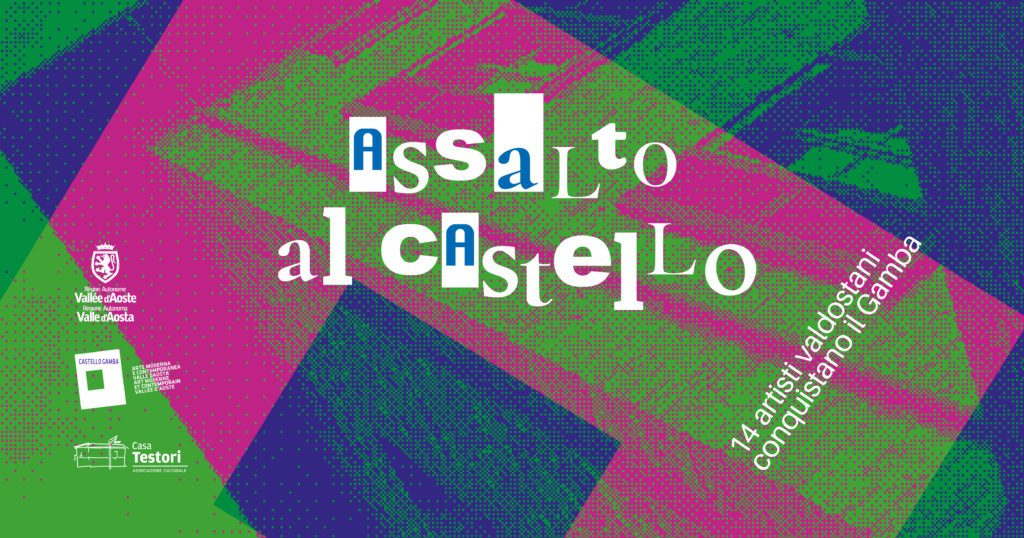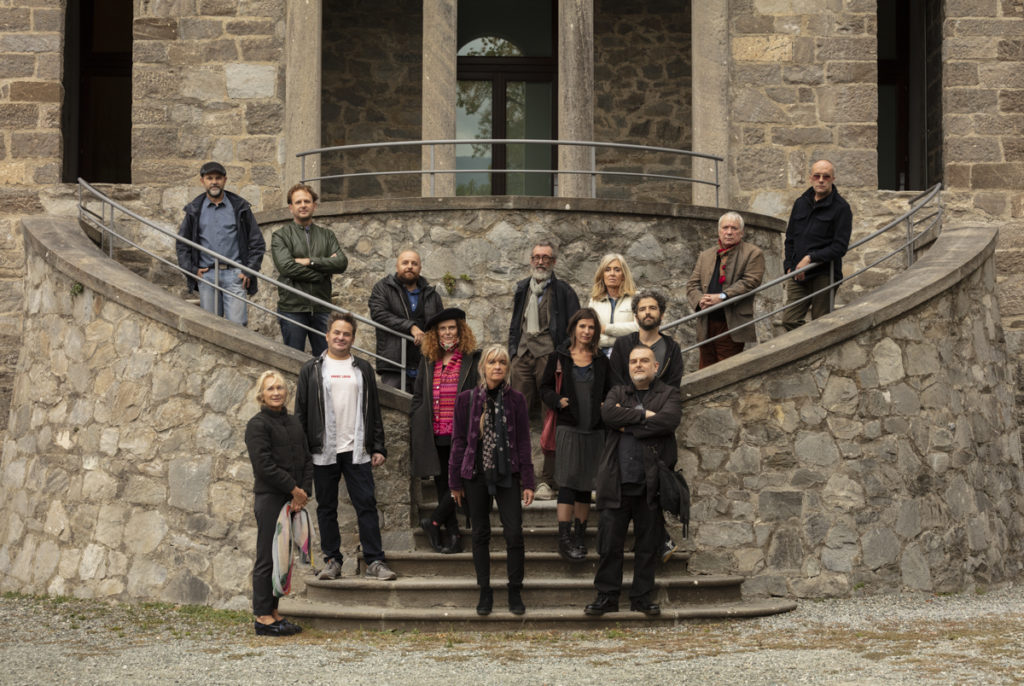ASSALTO AL CASTELLO
14 artisti valdostani conquistano il Museo Gamba
A project by Casa Testori
Curated by Davide Dall’Ombra
Castello Gamba – Museo d’arte moderna e contemporanea
Châtillon, Valle d’Aosta
23 October 2020 – 2 June 2021

AN OPPORTUNITY TO UNDERSTAND OURSELVES
Cristina De La Pierre
The Castello Gamba di Châtillon – Museo d’arte moderna e contemporanea della Valle d’Aosta, concludes its 2020 exhibition season with ASSALTO AL CASTELLO. 14 artisti valdostani conquistano il Museo Gamba [Assault on the Castle. 14 artists from Valle d’Aosta conquer the Museo Gamba]. The exhibition was organized by the was organized by the Regional Ministry for Cultural Heritage, Tourism, Sports and Commerce of Regione autonoma Valle d’Aosta, in collaboration with Casa Testori, a cultural hub just outside Milano, and curated by Davide Dall’Ombra.
The modern and contemporary art collection of the Region at the Castello Gamba sets a group of works by contemporary artists, active in Valle d’Aosta, alongside its two core collections: 19th-20th century works dedicated to Alpine landscapes and masterpieces by the leading Italian 20th century masters. A pacific but resolute occupation by artists who accept the challenge of measuring themselves against the important protagonists present in the museum, from Mario Schifano to Felice Casorati, from Renato Guttuso to Lucio Fontana.
The role of a public museum dedicated to the contemporary includes that of protecting and interpreting the artistic expression of the territory. This does not mean mummifying in a museum artistic expressions that are still evolving, but it does mean taking into account ongoing realities. To give voice to the contemporary art of the Valle d’Aosta is not only a civic duty, it is a unique opportunity to understand and also to understand ourselves.
ASSAULT ON THE CASTLE
Davide Dall’Ombra
It is often said that certain situations cannot be expressed in words. For artists, though, there is no way out. They are condemned to express themselves, to give voice to elements and feelings of our experience, to help us understand something of ourselves. All the same, if one aspect is common to the sparse number of contemporary art exhibitions in this strange year of 2020, it is the programmatic intention not to hold an exhibition on Covid. Today’s art, for the very fact that it cannot avoid expressing the times in which we live, knows that it can do this only by not placing itself directly at the center. This is not just an understandable revulsion against the “monotheme” of our conversations and concerns during these months. It is an awareness that respecting the particular drama means grasping its universal aspect, and that doing this requires taking a step back which these months do not yet allow. We can speak of this subject today only by eluding it. Rather as the mountains and pastures surrounding this exhibition will be sought in vain in the subjects chosen by these fourteen artists active in Valle d’Aosta.
This exhibition, in fact, had its origin in the minds of the artists taking part in it during the first lockdown, only to be halted, when barely inaugurated, by the arrival of the second. Its function, therefore, will be to lend its countenance to the new start, to the reiterated, obstinate and indispensable new start. When the first nucleus of artists coagulated around one of them, Marco Bettio, it was not difficult to construct the team and bring it to the attention of the Scientific Curator of Castello Gamba, Viviana Maria Vallet. She, in her turn, identified Casa Testori as the proper interlocutor to curate it.
Faithful to its origin, the exhibition does not aspire to provide a screening of the artistic production of the Valley or to identify its top-drawer artists, though most of these have probably been drawn into the net. For this reason, we thought of an “assault”. The claims and predicaments of the artists were allowed to speak, their invasion was accepted. We listened, but we also aimed to give free rein to the expressive potential of each artist, inviting them to dialogue with the space. We aimed to go beyond the simple gallery of images and bring about fourteen spatial interventions which would delineate the exhibition itinerary and the permanent collection of the Museum, as well as certain crucial external points.
BETWEEN THE COLLECTION, IN THE EXHIBITION HALLS AND OUTDOORS
This is not a gallery of images, but 14 new spatial interventions spread throughout the exhibition, in the collection and outside: from painting to video, from sculpture to installation.
After opening with Jean-Claude Oberto’s work, which illustrates this persistent context of uncertainty, four interventions mark the rooms of the permanent collection: these are the works by Patrick Passuello (Room 1), Massimo Sacchetti (Room 2), Pasqualino Fracasso (Rooms 4, 5, 7, 11 and 13) and Barbara Tutino(Room 10).
Leaving the rooms of the collection, Marco Jaccond‘s papers accompany us up the stairs to this point and, here on the left, the “consultation room” hosts Andrea Carlotto‘s talk. Behind us, the Castle’s usual exhibition space unfolds, with works by Giuliana Cunéaz and Chicco Margaroli; the mezzanine is presided over by the paintings of Marco Bettio and Sarah Ledda, while Riccardo Mantelli invades the entire roof terrace.
But the exhibition does not end in front of the extraordinary landscape over the valley. Two artists have also occupied the exterior. In the large fountain is the work of Daniele De Giorgis and, in the portico on the main facade of the Castle, just a few steps away, Marina Torchio‘s sculptures occupy the loggia above the staircase.
A CATALOGUE AND TWO PHOTOGRAPHERS
The exhibition’s design and the protagonism of the artists led to the decision to create, on the one hand, a catalogue with photographs of the works installed, entrusted to Alessandro Zambianchi and, on the other, a gallery of photographic portraits of the artists on show, taken by Giorgio Olivero.



























